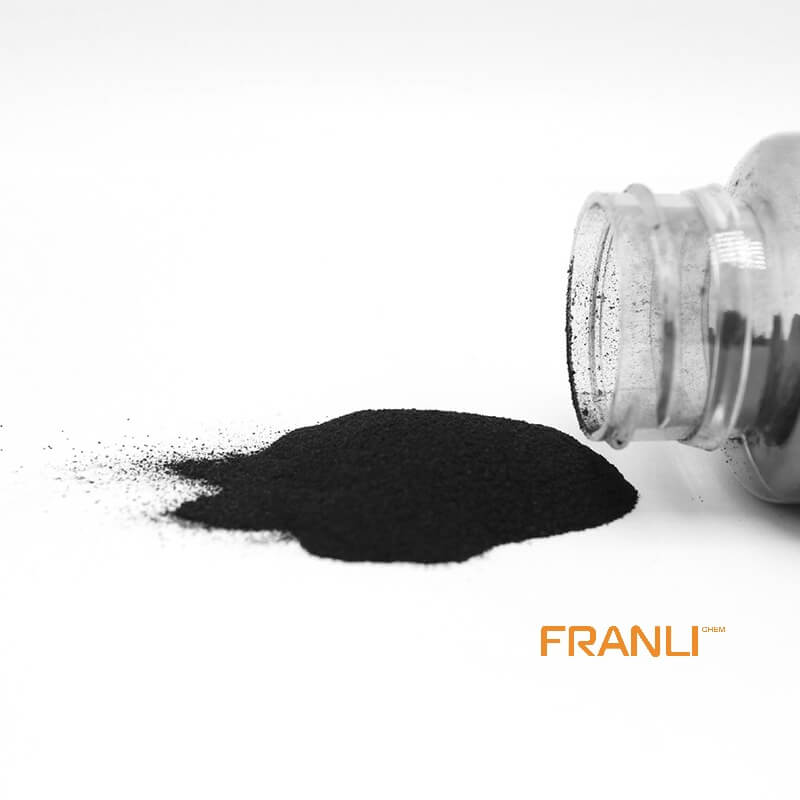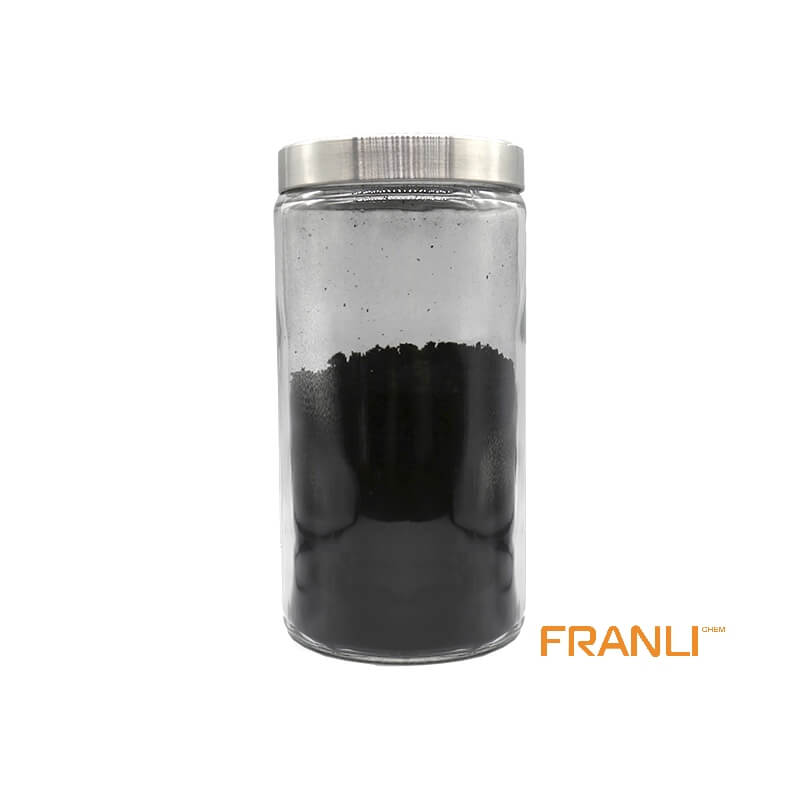


Graphene
Size
1-2nm thick x 0.5-5microns wide
Package
According to customer requirements
Features
High strength, high electrical conductivity, etc.
Application
Can be used as filler(between 0.01% and 5%).
Graphene, as the thinnest, toughest and best conductive nano material found at present. It is a two-dimensional crystal composed of carbon atoms stripped from graphite material with only one layer of atom thickness. Known as “black gold”, it is “the king of new materials”. Scientists even predicted that graphene “will completely change the 21st century”.
Request a quote
1、 Background introduction
At present, the use of graphene materials in biomedicine and devices has brought great progress in these aspects. However, with their wide use, biological safety problems arise. In recent years, studies have shown that graphene derivatives can enter organisms and have adverse effects on organisms, especially cytotoxicity and genotoxicity. Therefore, the biological safety of graphene derivatives needs in-depth exploration.
At present, graphene derivatives have been mass-produced. The use of graphene materials in biomedicine and devices has brought great progress in these aspects, even a revolution in the biomedical field. However, with their wide use, biological safety problems arise.
Graphene derivative materials mainly include single-layer graphene, several layers of graphene (2-10 layers), graphene oxide, etc. Graphene oxide is widely used in biomedicine because of its oxygen-containing functional groups, is soluble in water, and is easy to dissolve in many solvents. In addition, the surface modification of graphene can form chemical groups, such as the introduction of oxygen-containing groups such as hydroxyl, carboxyl, epoxy, and carbonyl. Through chemical methods, it can intervene in antibodies, drugs, and DNA, improve its function and expand its application in biomedicine.

However, in 2010, Iranian scientists found that exposure of Escherichia coli and Staphylococcus aureus to graphene could lead to bacterial death. Because graphene can extract phospholipids, an important component of the cell membrane, leading to cell disintegration. Graphene can not only inhibit bacteria, but also cause damage to human cells. Therefore, a more comprehensive study of the toxic effects of graphene and its derivatives on organisms is very important.
2. Toxicity mechanism of graphene and graphene oxide
Although there have been many previous studies on the toxicity mechanism of graphene and go, no sufficient conclusions have been obtained to establish risk assessment or regulations. The toxicity of graphene depends on graphene surface energy (chemical structure or functionalized coating properties), size, cell type, dose, exposure time, etc.
Many reports have proposed that oxidative stress is one of the mechanisms involved in the toxic effects of carbon nanomaterials. Oxidative stress caused by excessive reactive oxygen species (ROS) is the leading mechanism to induce the pathological changes of graphene. Antioxidant enzymes (superoxide dismutase or glutathione peroxidase) can reduce or eliminate reactive oxygen free radicals. If ROS exceeds the scavenging capacity in vivo, oxidative stress will occur, resulting in the damage of cellular macromolecules such as proteins, DNA, and lipids.
Because graphene has a sharp edge, when it directly contacts the cell membrane, it will produce membrane stress, make the cell membrane fall off, and have a toxic effect on it. In addition, due to the hydrophobic nature of graphene, proteins are forced to separate, which destroys cellular metabolism and eventually leads to cell death.
Graphene derivatives have been used to treat polluted water and waste gas because of their photocatalytic and adsorption effects. However, the wastes generated in the application of graphene derivatives enter the air, soil, and water, and enter the organisms through inhalation, diet, and infiltration, which will have physical, chemical, and biological effects on the organisms and cause biological toxicity.
Graphene derivatives enter the human body in four different ways: inhalation, ingestion, skin penetration, injection, or implantation. As shown in the figure, the human body’s defense system against graphene derivatives mainly includes biological barriers such as mucus, phospholipid bilayer, skin, and blood-brain barrier. Graphene and graphene oxide will cause body reactions through these biological barriers, such as lung toxicity, blood disease, cytotoxicity, and other sensitive reactions.
Pulmonary toxicity
Schinwald found that the aerodynamic diameter of graphene is much smaller than its transverse diameter, and the projected area diameter is 30 μ The aerodynamic diameter of the graphene sheet is only 3.26 μ m. Aerodynamic diameter at 10 μ Below m are inhalable particles. Large graphene sheets are easy to become inhalable particles, enter the lungs and deposit in the alveoli, and have toxic effects on the lungs. Because functional groups are introduced in the oxidation process, go can interact with proteins in plasma to form go protein composite particles. Large size and high dose can promote go to form a larger complex and be intercepted by the lung, resulting in severe pulmonary fibrosis and cyst.
Genetic material toxicity
The study of genetic material toxicity is very important because it is related to DNA damage, gene mutation, and cancer
There is a close correlation between symptoms. Qiao compared different nanomaterials (< 50nm) and graphene oxide (2 μ m) For DNA toxicity in human fibroblasts, it is observed that different materials can cause different DNA damage, and go has the most toxic effect. In addition, they also tested the toxicity of different materials. The lowest test concentration of toxicity caused by graphene is 1 μ G · ml-1, while nanoparticle SiO2, zinc oxide, titanium dioxide, tin, and carbon nanotube materials are only at high concentration (100 μ G · ML-1) can cause DNA damage. Therefore, graphene is the most serious material causing DNA damage.

Cytotoxicity
Graphene derivatives show good biocompatibility, on which human cells can attach and proliferate, especially retinal pigment epithelial cells.
Graphene material family (gfns) is widely used in the environment because of its large surface area and high adsorption activity, which will lead to adverse effects on animals (such as mammals, zooplankton, protozoa, etc.). Fig. 4 depicts that gfns enter cells through direct infiltration and endocytosis and cause damage to biological cell membranes through extraction and cutting. Gfns covered on the extracellular surface can be toxic due to blocking ion/gas exchange. Internalization of gfns can cause oxidative stress, mitochondrial dysfunction, and DNA damage.
2. Toxicity of graphene and its derivatives on plants
The sterile seeds of plants were soaked in different concentrations of graphene solutions (0, 500, 1000, and 2000mg · L-1) in the dark at 25 ℃ and overnight. Then the soaked seeds were taken out and placed on wet filter paper. At 25 ℃, they were cultured in a solution containing 3ml graphene and a solution without graphene respectively until germination. After germination, the number of germinated seeds was counted and analyzed. The results showed that graphene derivatives significantly inhibited plant growth. Graphene induced an increase in the concentration of reactive oxygen free radicals, resulting in cell death and necrotic lesions in cabbage, tomato, and spinach, while lettuce showed no toxic effect. These facts also suggest that the potentially toxic effects of plants may depend largely on the dose of graphene and plant species.
3、 Summary
Graphene and its derivatives have been widely used in materials science, energy, biomedicine, and other fields because of their excellent physical properties. With the improvement of the graphene derivative production process and the reduction of production cost, its application field will be further expanded, and the waste containing graphene derivative generated in production, use, and waste material treatment will increase rapidly. With their accumulation in air, water, and soil, the impact of graphene derivatives on organisms has become one of the research hotspots of environmental science. A large number of studies show that graphene derivatives have biological toxicity, and their impact on the environment must be paid enough attention to.



